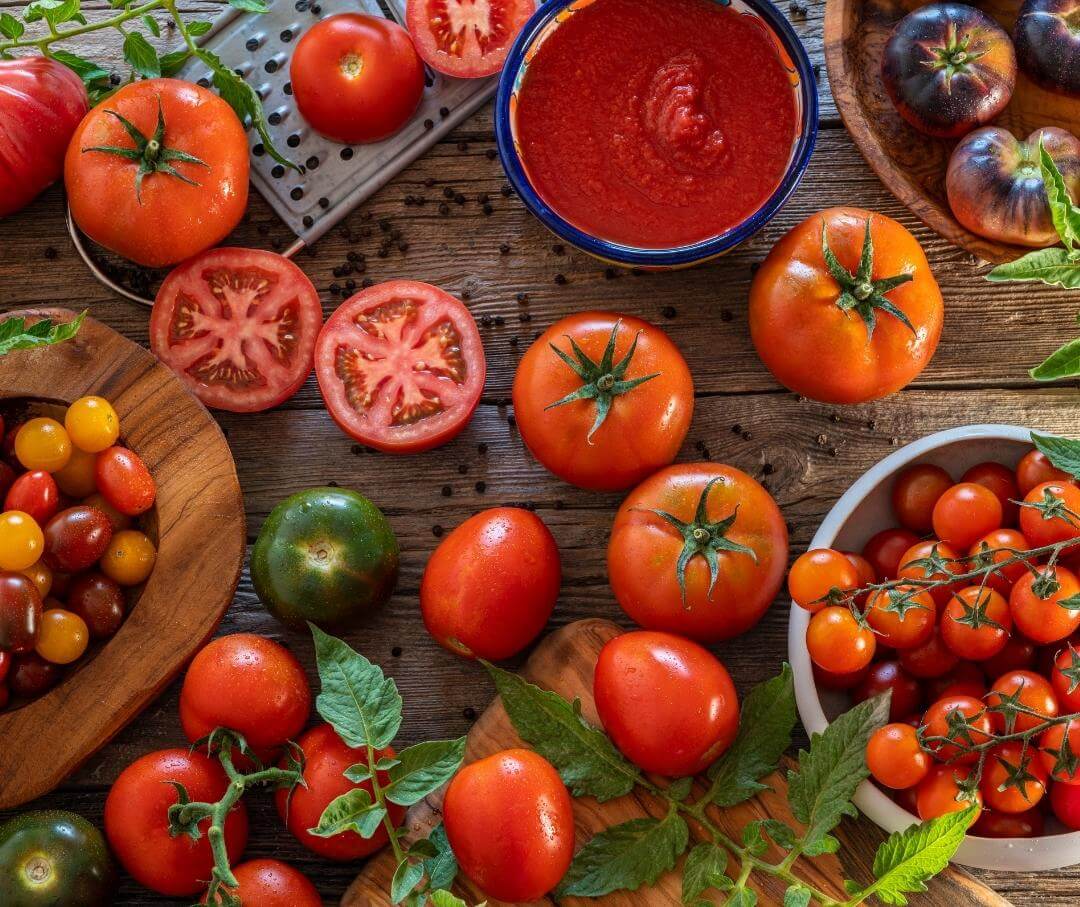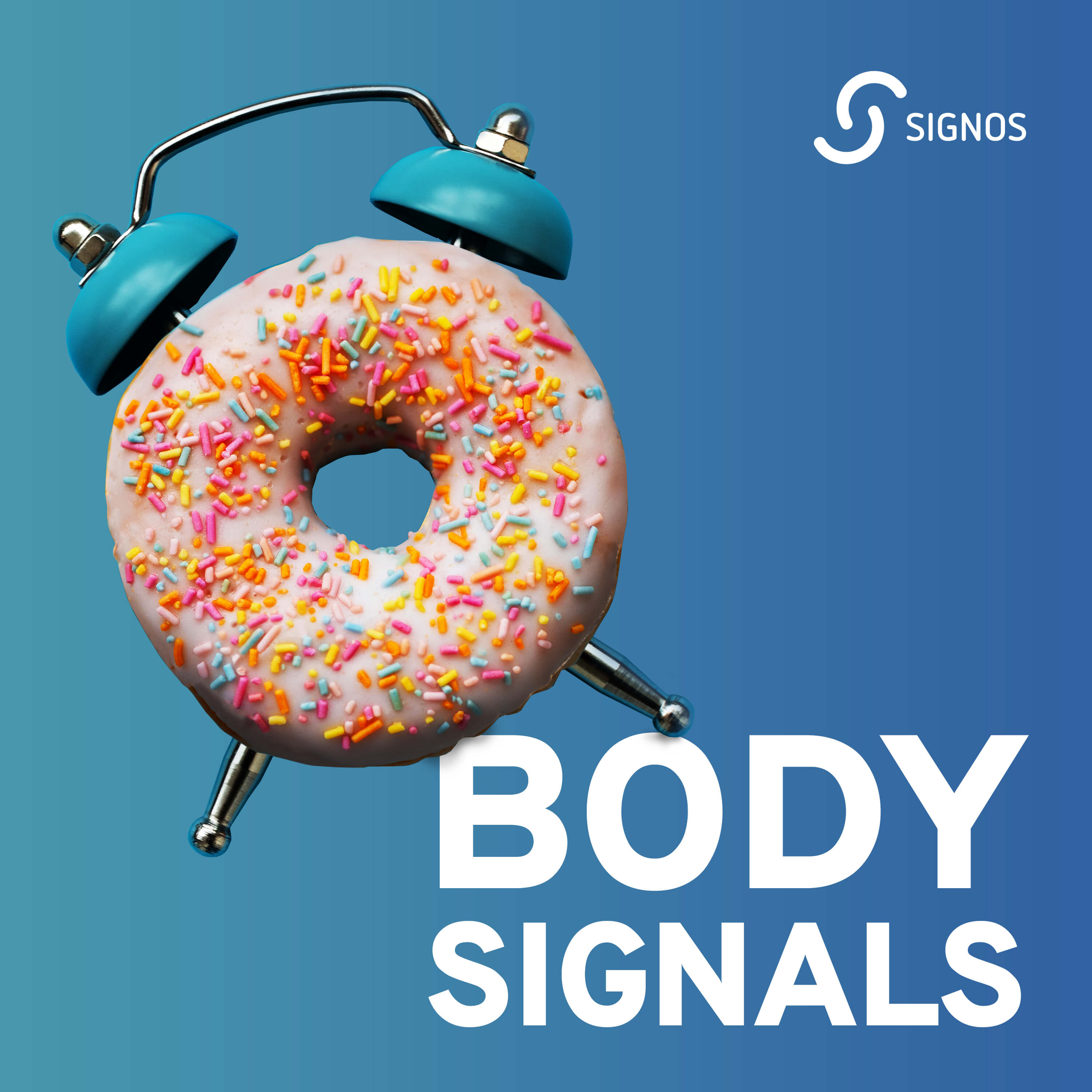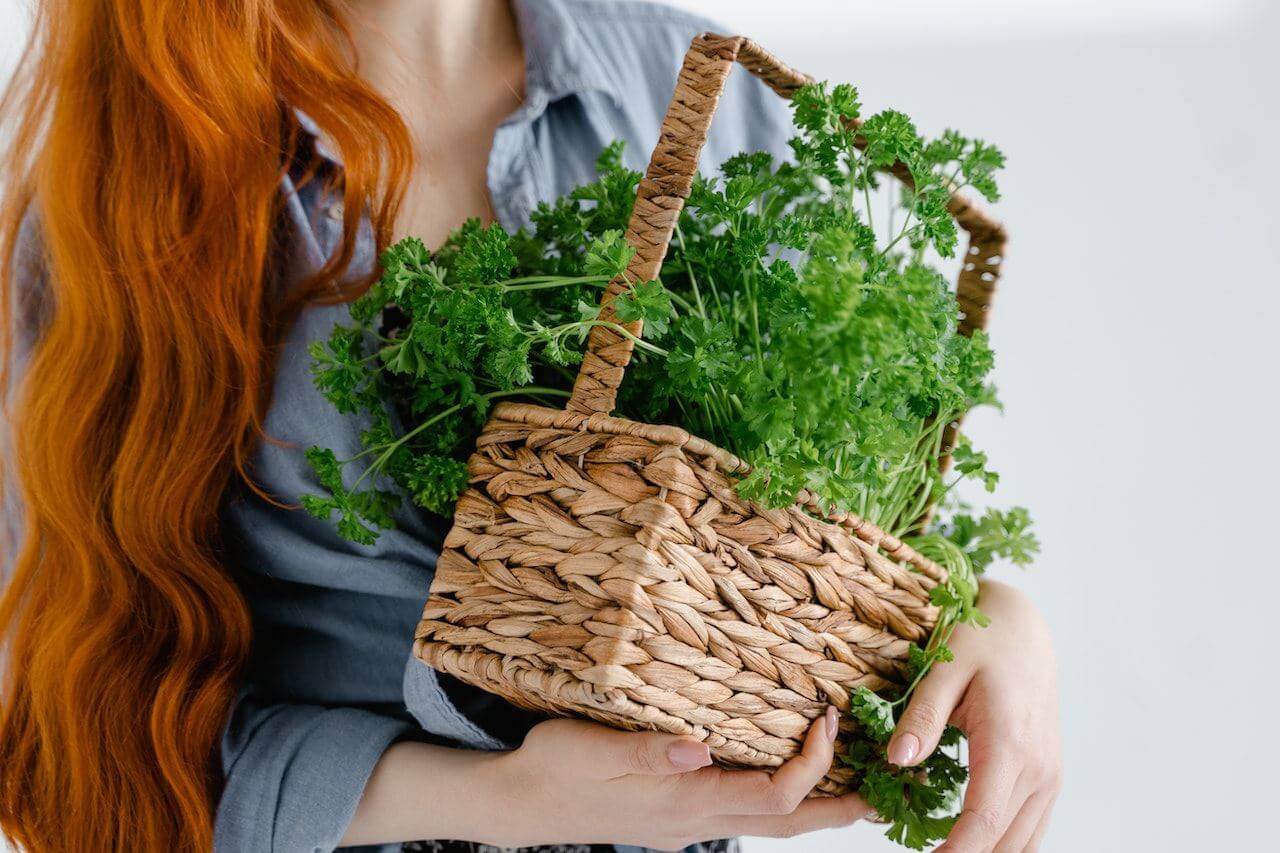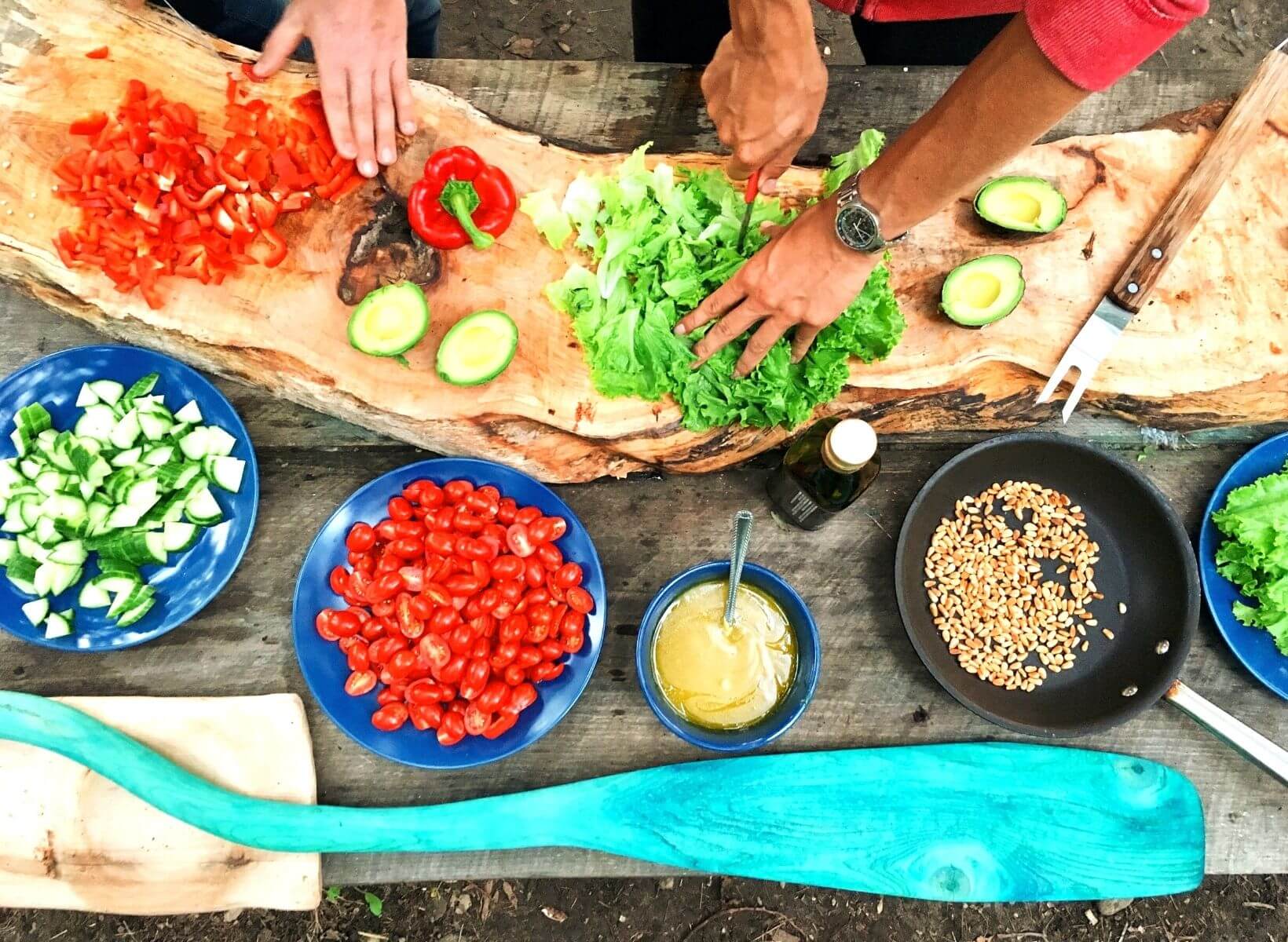The ketogenic (keto) diet began in the early 1900s as an effective treatment for children with epilepsy (seizures). Later, in the 1970s, it was re-introduced as the Atkins Diet as a weight loss strategy. In 2020, the keto diet was the most Googled diet in the United States.1
The keto diet's distinguishing feature is that carbohydrate intake is kept very low, and protein and fat are consumed in higher amounts. The macronutrient division causes the body to enter ketosis, a state in which the body uses stored fat or consumed fat for energy.1
Research has shown the health benefits of the keto diet for the treatment of seizures, obesity, diabetes, bipolar illness, behavior and attention disorders, and Alzheimer’s disease.2
Keep reading to learn more about the keto diet, its health benefits, and a 14-day meal plan.
{{mid-cta}}
What to Know When Following a Ketogenic Diet
A classic keto eating style is considered a high-fat, low-carb diet. The percentage of calories a person consumes while following this diet is approximately 5-10% carbs (10- 15 grams of carbohydrates per day), 15-20% protein (1 gram of protein per kilogram body weight), and 70-75% from fat sources.1
Different variations allow for more carbohydrates. For example, very low-carbohydrate keto diets provide 20 to 50 grams of carbohydrates daily. Low-carbohydrate diets are defined as less than 130 grams daily, and moderate-carbohydrate diets allow 130 to 230 grams daily.2 Since carbohydrates are low, fat provides most of your energy intake.
After three to four days of following the keto diet, your body shifts from using carbohydrates for energy to fats as the most available fuel source. Stored fat is converted to ketones in the liver, which fuel the body and brain.1, 2
During the shift from carbohydrate to fat energy use, some people experience fatigue, lethargy, and headaches. Individuals with type 2 diabetes may experience low blood sugar levels and will need extra monitoring of medications and blood sugar levels as they switch to ketosis.2
Other side effects include dehydration, possible kidney stones, constipation, lower electrolytes, and inadequate vitamin intake due to the restricted diet. Ensuring adequate fluid and fiber and supplementing calcium, vitamin D, electrolytes, and other vitamins and minerals may be needed.2
Generally, following a keto diet plan is safe for most people. Speak with your healthcare provider or a registered dietitian before starting the keto diet to prevent any adverse effects.
Best Meals for Keto Diet: What to Eat
When following a keto diet, you must limit carbohydrates and prioritize fat and protein sources. Here is a list of recommended foods.
Full-Fat Dairy
Full-fat cheese like cheddar, mozzarella, Colby, and Swiss, unsweetened full-fat Greek yogurt, butter, and cream.
Poultry
Chicken and turkey thighs, legs, or breast meat.
Nuts and Seeds
Hazelnuts, Brazil nuts, walnuts, pecans, almonds, chia seeds, ground flax seeds, peanuts, and pumpkin seeds.
Whole Eggs
Chicken, quail, duck, or goose eggs.
Non-starchy Vegetables
Spinach, watercress, eggplant, zucchini, parsley, artichoke, okra, cabbage, mushroom, avocado, leek, carrot, radish, celery, cauliflower, green pepper, lettuce, cucumber, tomato, and olives.
Lower-Carbohydrate Fruits
Lemon, six strawberries daily, and ten berries daily.
Meat
Beef, pork, turkey, and venison (deer or other wild game).
Fish
Salmon, herring, tuna, sardines, shrimp, lobster.
Nut Butter
Unsweetened nut butter like almond, peanut, or sunflower.
Fats and Oils
Olive oil, avocado oil, and flax seed oil.
Condiments
Salt, pepper, vinegar, individual spices like garlic powder or paprika, and fresh herbs.
Beverages
Water (unsweetened sparkling), unsweetened tea and coffee (hot or cold), and bone broth.
Foods to Avoid When Following a Ketogenic Diet

Below are foods that usually exceed the classic limit of 10 to 15 grams of carbohydrates per day or 20 to 50 grams for the very low-carbohydrate keto diet.1,2
Starchy Vegetables
All types of potatoes, corn, peas, and pumpkin.
Pasta
Macaroni, spaghetti, and all other noodles.
Sugary and Alcoholic Beverages
Sweetened tea, coffee, sports drinks, fruit drinks, soda, beers, and sugary mixed drinks (like margaritas).
Beans and Legumes
Black beans, chickpeas or garbanzo beans, lentils, white beans, kidney beans, etc.
Sugary Foods
Table sugar, honey, candy, ice cream, desserts, breakfast cereal, pastries, and donuts.
Baked Goods
White bread, whole wheat bread, crackers, cookies, cake, and rolls.
Grains
Tortillas, oats, wheat, rice, cereals, quinoa, and most types of flour.
<p class="pro-tip"><strong>Also Read: </strong><a href=is-keto-healthy-for-weight-loss>Is Keto a Healthy Way to Lose Weight?</a>.</p>
14-Day Meal Plan for Keto Diet
Here is a 14-day keto meal plan that restricts total carbohydrates to 50 grams daily; some people restrict this to 10 to 15 grams daily.
Swap food items for personal preference, food allergies, individual dietary needs, or food intolerances.
1. Monday
Breakfast:
Two eggs scrambled in butter and served with sauteed mushrooms. Serve with black coffee or unsweetened hot tea.
Lunch:
Charcuterie plate: almonds, diced cheese, olives, a few strawberries, and avocado.
Dinner:
Baked salmon with lemon juice, spinach salad with carrots, celery, olive oil dressing, and cauliflower rice.
2. Tuesday
Breakfast:
Egg muffin cups with turkey sausage, cheese, mushroom, garlic powder, and pepper.
Lunch:
Egg salad and avocado salad with green onions and tomatoes over lettuce.
Dinner:
Air-fried cod with lemon, pepper, and garlic. Serve with roasted carrots, peppers, okra, and mushrooms.
3. Wednesday
Breakfast:
Omelet made with eggs, spinach, mushrooms, and garlic. Serve with black coffee or unsweetened hot tea.
Lunch:
Tuna salad on cucumber slices for mini-sandwiches. Serve with lettuce salad made with carrots, onions, peppers, and tomatoes.
Dinner:
Chicken tortilla soup made with chicken breast, chicken broth, tomatoes, peppers, onions, carrots, cumin, chili powder, and cauliflower rice. Top with diced avocado and cheese.
4. Thursday
Breakfast:
Full-fat yogurt with ten blackberries and soaked chia seeds mixed in. Top with almonds or serve on the side.
Lunch:
Leftover chicken tortilla soup with roasted chili powder nuts.
Dinner:
Hamburger served on lettuce bun with tomato, cheese, and avocado on top. Serve with raw carrots.
5. Friday
Breakfast:
Scrambled eggs mixed with cheesy cauliflower rice. Handful of sunflower or pumpkin seeds.
Lunch:
Tuna served over leafy greens with feta cheese, tomatoes, olive oil, lemon juice, and black pepper.
Dinner:
One-skillet stir fry made with chicken, peppers, mushrooms, carrots, watercress and served over cauliflower rice.
6. Saturday
Breakfast:
Hard-boiled eggs with pepper and salt. Serve with chia pudding made with unsweetened almond milk or water and cinnamon.
Lunch:
Mini sandwiches made with keto cheese crackers, sliced tomatoes, sliced meat, and cheese. Serve with chopped cucumber, onion, and pepper salad.
Dinner:
Steak grilled with avocado oil, pepper, and garlic. Serve with cheesy mashed cauliflower and sauteed green beans.
7. Sunday
Breakfast:
Two eggs scrambled in butter and served with sauteed spinach and peppers. Serve with black coffee or unsweetened hot tea.
Lunch:
Leftover steak served over mashed cauliflower. Serve with spinach, tomato, and feta cheese salad with olive oil dressing.
Dinner:
Shrimp kabobs with tomatoes, artichoke, okra, mushrooms, and peppers served over cauliflower rice.
8. Monday
Breakfast:
Overnight chia pudding made with full-fat yogurt, cinnamon, and vanilla extract. Top with pecans or slivered almonds.
Lunch:
Leftover shrimp, veggies, and cauliflower rice bowl. Add nuts and cheese as a side.
Dinner:
Pork chops topped with sauteed mushrooms. Serve with green lettuce, a blend salad, and olive oil dressing.
9. Tuesday
Breakfast:
Slice leftover pork and scramble with onions, eggs, and mushrooms for a breakfast scramble. Serve with black coffee or unsweetened hot tea.
Lunch:
Keto tortilla wraps are made with almond flour, psyllium husks, and olive oil. They can be used to make a tuna and egg salad wrap with lettuce. Serve with pistachios on the side.
Dinner:
Eggplant parmesan made with almond meal, mozzarella and Parmesan cheese, parsley, garlic powder, black pepper, and no-sugar tomato sauce.
10. Wednesday
Breakfast:
Keto breakfast burrito made with keto tortilla wraps, scrambled eggs, spinach, avocado, and cheese.
Lunch:
Leftover eggplant parmesan served with a chopped salad using cucumber, tomato, onion, feta cheese, and olive oil.
Dinner:
Grilled salmon and vegetables (mushrooms, bell peppers, okra, tomatoes, or carrots). Squeeze lemon juice over salmon.
11. Thursday
Breakfast:
Full-fat yogurt with ten blueberries and ground flax seeds mixed in. Top with walnuts or pecans, or serve on the side.
Lunch:
Avocado and tuna with diced tomatoes, celery, and olives served in a lettuce wrap.
Dinner:
Meatballs served with keto-friendly noodles (shirataki, eggplant, or cucumber noodles), parmesan cheese, and roasted tomatoes.
12. Friday
Breakfast:
Egg muffin cups with bacon, cheese, and spinach seasoned with black pepper and garlic. Serve with black coffee or unsweetened hot tea.
Lunch:
An out-to-eat lunch option includes a bunless burger topped with cheese, avocado, and mushrooms, along with a side salad with olive oil dressing.
Dinner:
Roasted chicken and carrots with cheesy cauliflower rice.
13. Saturday
Breakfast:
Omelet made with eggs, peppers, mushrooms, and bacon. Serve with black coffee or unsweetened hot tea.
Lunch:
Leftover roasted chicken, carrots, and cheesy cauliflower rice.
Dinner:
Grilled tuna steaks served with avocado and cucumber salsa. Serve with spinach salad and olive oil dressing.
14. Sunday
Breakfast:
Hard-boiled eggs with pepper and salt. Serve with chia pudding made with unsweetened almond milk or water, and cinnamon. Top with your choice of berries.
Lunch:
Charcuterie plate: Walnuts, pecans, diced cheeses, olives, a few strawberries, and avocado with keto cheese crackers.
Dinner:
Baked whole chicken served with roasted artichokes and carrots.
Best Tips to Create Your Keto Diet Meal Plan

- Keep frozen salmon or cod and canned tuna and salmon as quick protein options for lunch or dinner.
- Utilize frozen, non-starchy vegetables (peppers and riced cauliflower) for quick produce options and to ensure you get adequate fiber each day.
- Eggs are a quick breakfast option paired with any leftover vegetables and cheese.
- Keep a variety of nuts on hand; they are shelf-stable for up to 6 months.
- Wash and cut non-starchy vegetables once weekly to prepare them for meals or snacks.
- Consider meal prep for freezer-friendly foods like egg muffin cups or keto tortillas to save time on busier days.
- Prepare enough food at dinner for leftovers for lunch or an easy dinner.
- Eating out is possible if you ask for a meat or fish entree served with salad or non-starchy vegetables.
Learn More About How to Improve Blood Sugar Health With Signos’ Expert Advice
People are unique in their food preferences and approach to managing blood sugar levels and losing weight. A keto diet may (or may not) be a good fit for you.
A Signos continuous glucose monitor (CGM) can help you track blood sugar levels and your body's response to different diets (like a keto diet).
A Signos CGM can help you make effective changes to improve your health, manage your blood sugar level, or achieve healthy weight loss.
A healthcare professional can help you choose the proper medication (if needed) to help manage your health conditions, blood sugar levels, and weight.
Learn more about nutrition and healthy habits on Signos’ blog. Take a quick quiz to determine if Signos fits your needs.
<p class="pro-tip"><strong>Learn More: </strong><a href=keto-intermittent-fasting>Snack Smart: Intermittent Fasting + Keto for Weight Loss</a>.</p>
- Item 1
- Item 2
- item 3
































